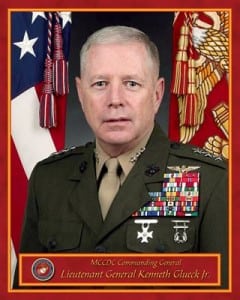
The Marine Corps should have its requirements documents for the Amphibious Combat Vehicle (ACV) Increment 1 complete within about six months and award a production contract in fiscal year 2017, the deputy commandant for combat development and integration told a Senate subcommittee Wednesday. Lt. Gen. Kenneth Glueck told the Senate Armed Services seapower subcommittee that the requirements would be largely based off those from the canceled Marine Personnel Carrier program and that the four vehicles the Marines tested at the…













